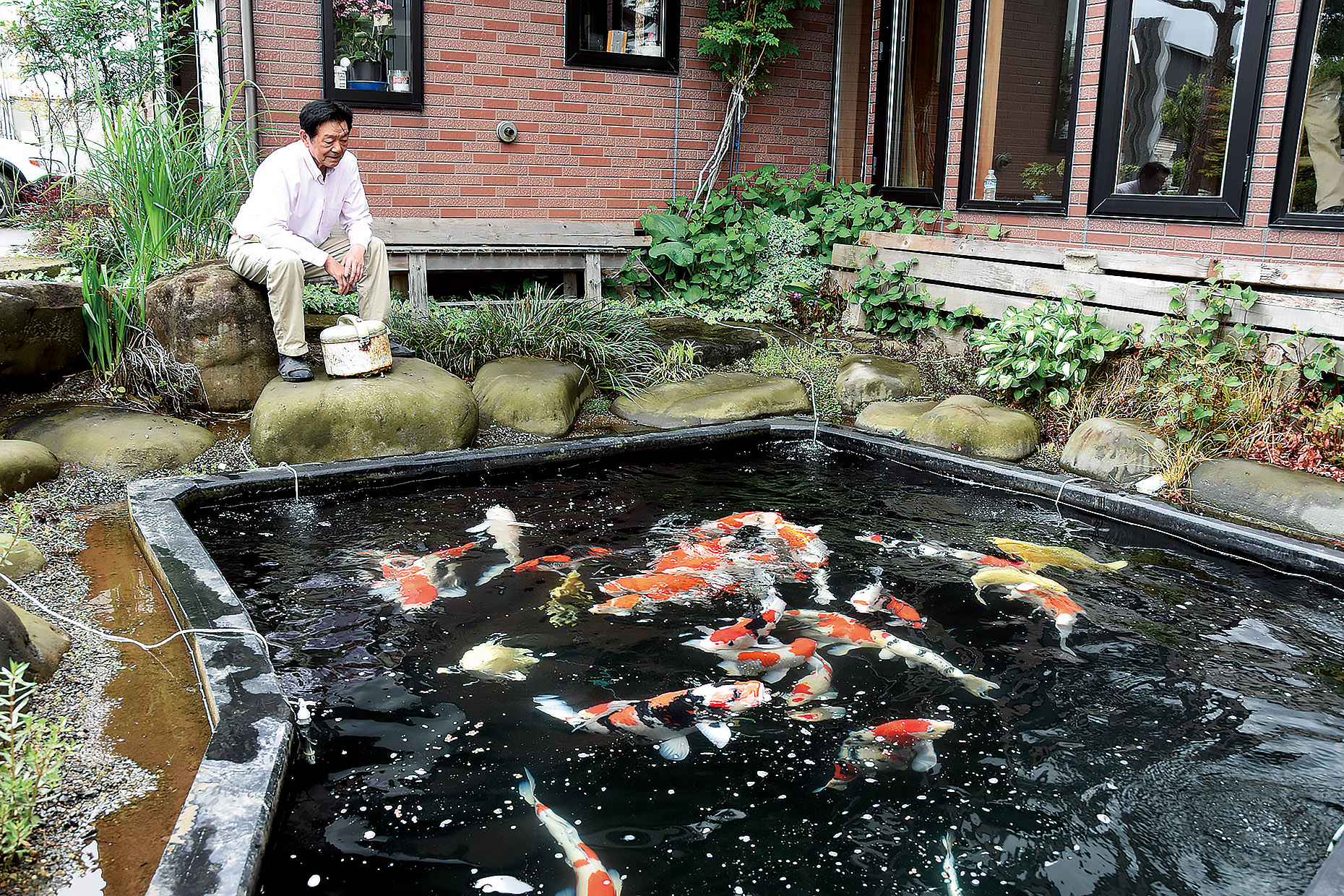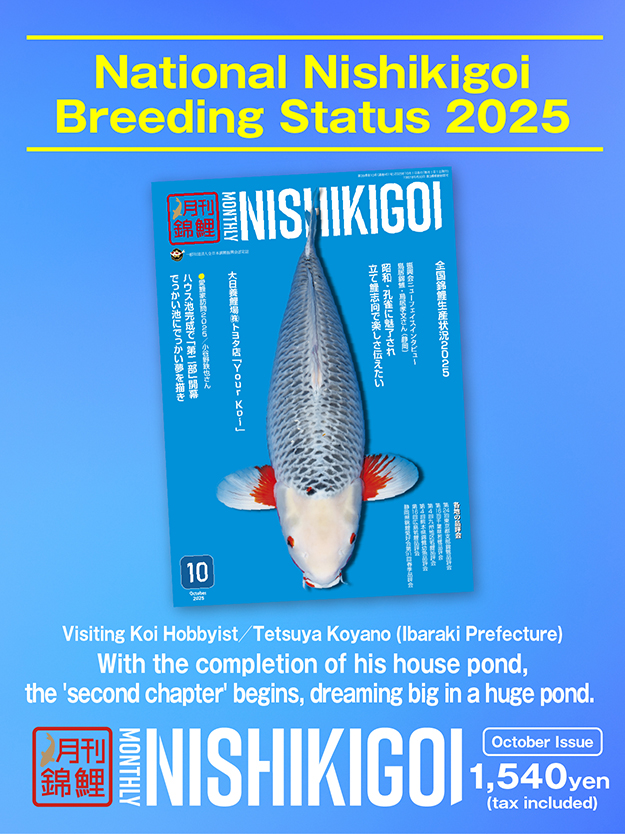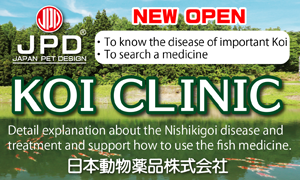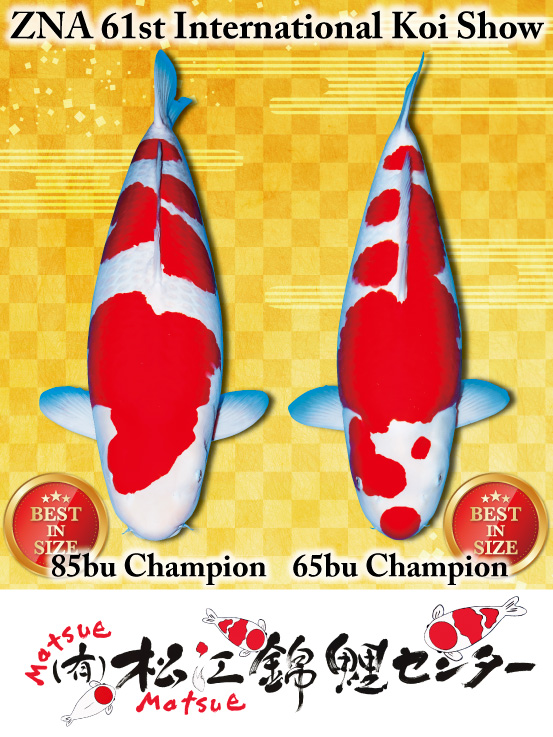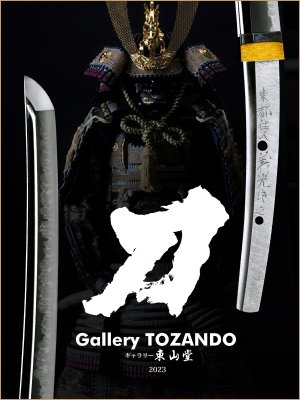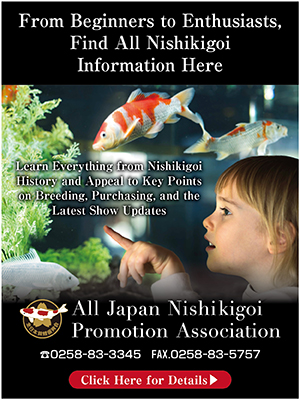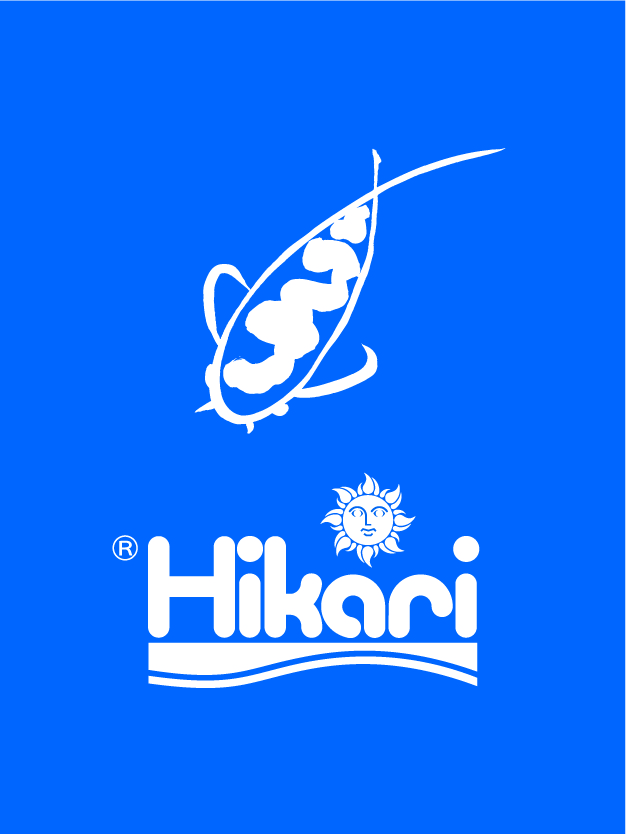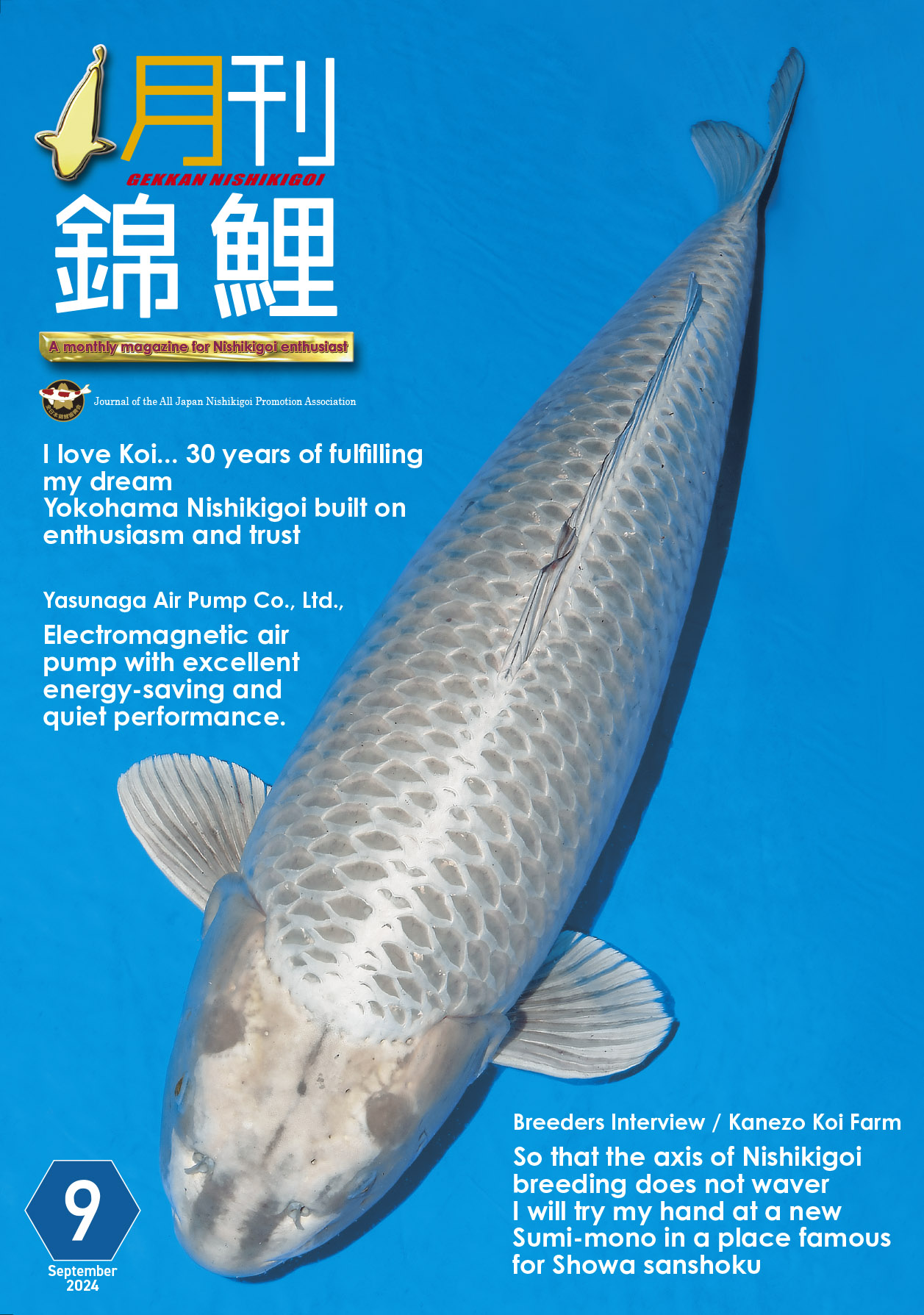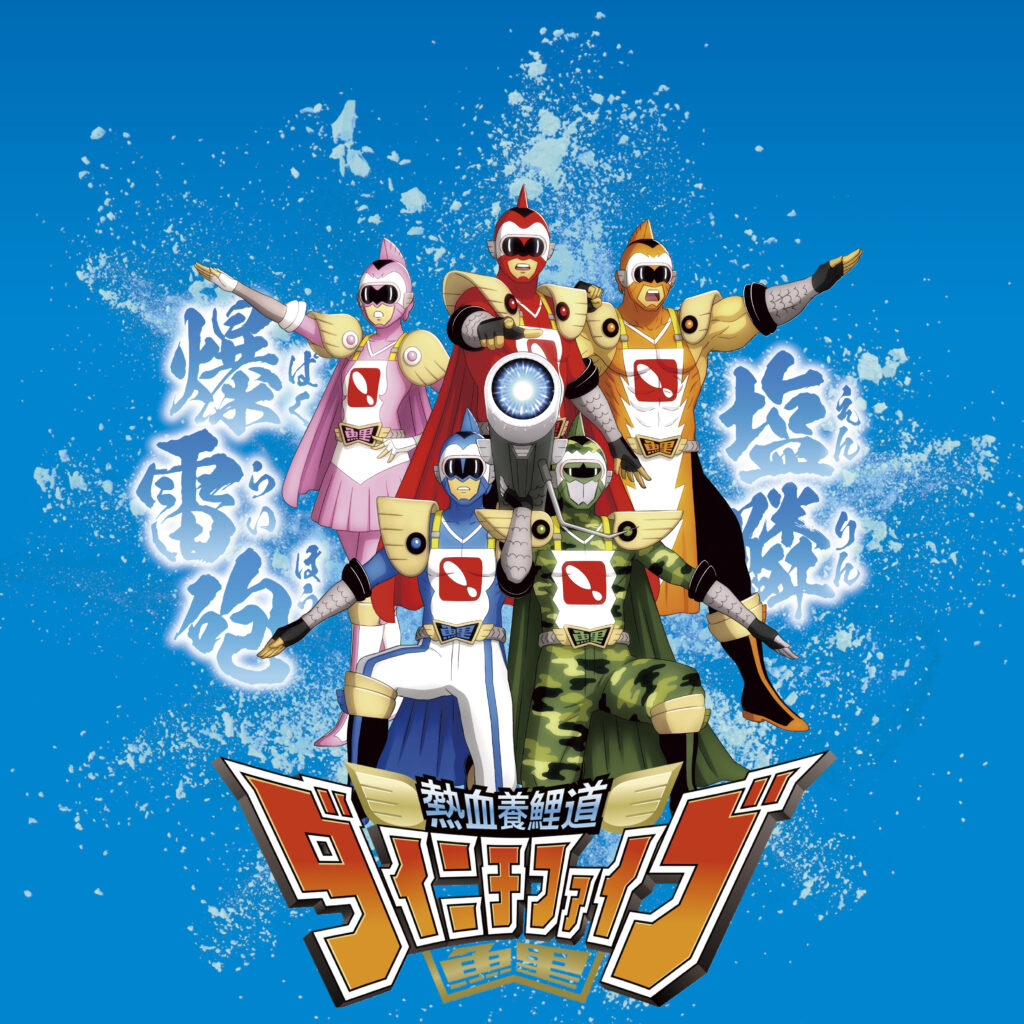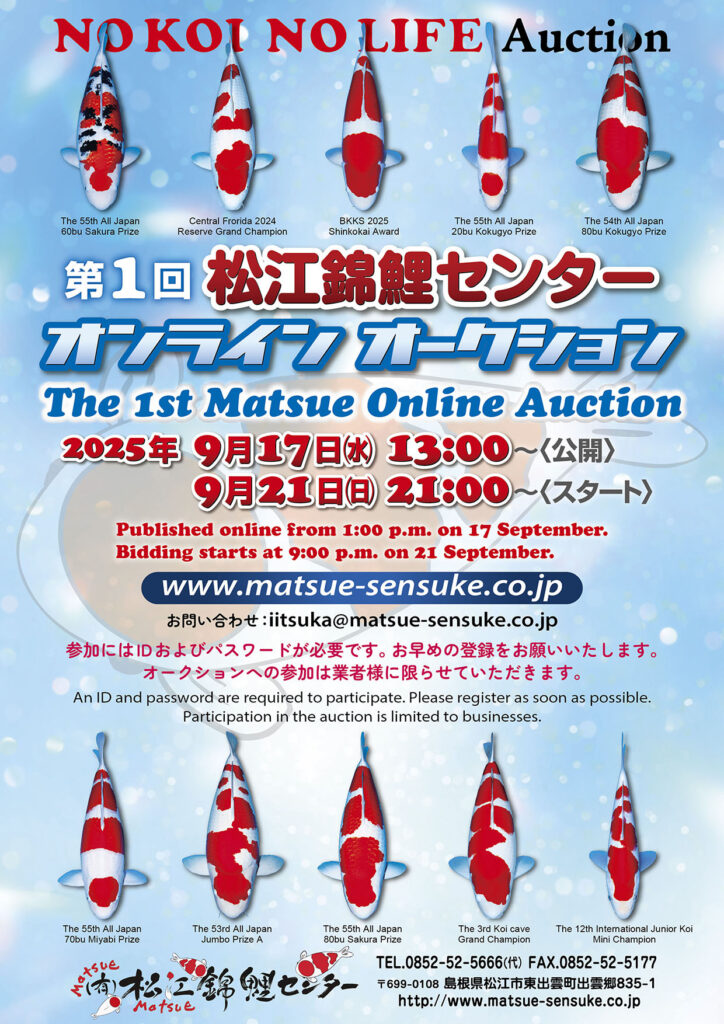Indoor pond, heated tank, and mud pond
New goal: “From tosai to large-sized”.
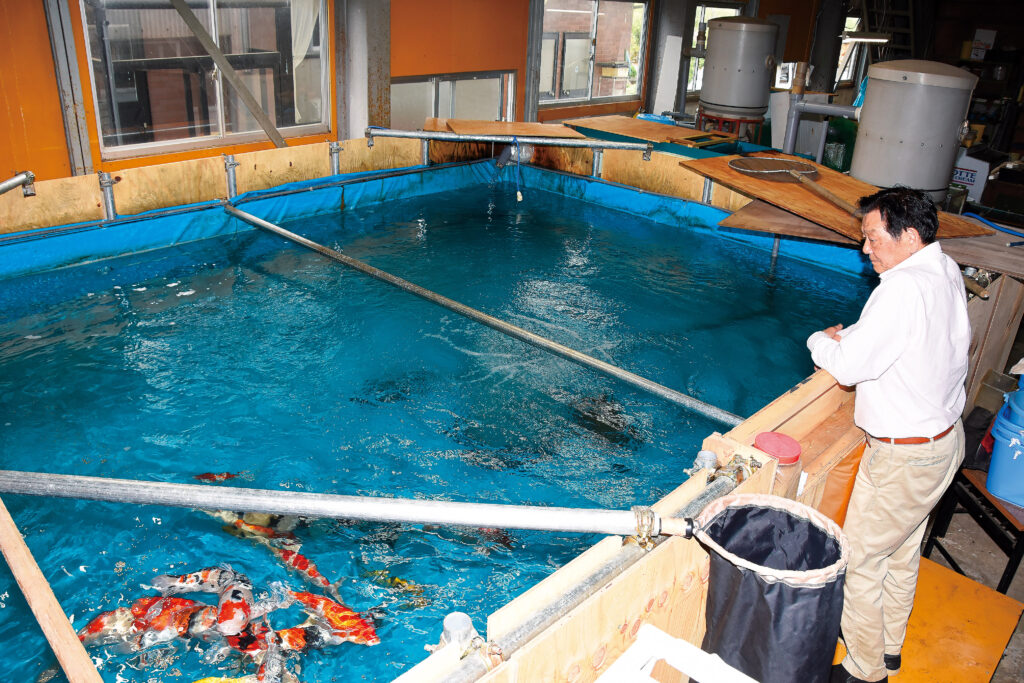
The approximately 17-ton sheet pond is in a spacious warehouse next to the house. It measures 3.6 meters by 4.7 meters, providing ample space, and is used for overwintering the koi from the garden pond. Initially, it was left empty during the summer, but now, some koi are kept in it year-round to prevent the sheet from deteriorating.
The structure is conventional, with plywood attached to a frame assembled with single pipes and a custom-made sheet tailored to the size of the pond inside. However, to withstand the pressure of 17 tons of water, there are lots of pipes, and each part is meticulously reinforced. There are also pipes inside the pond secure it and prevent expansion due to water pressure. Sandwiching insulation with plywood not only protects against winter cold but also improves the pond’s appearance by avoiding exposed pipes. Filtration uses the Wakishimizu 10 model and a three-chamber filtration tank, employing roll brushes, honeycomb, and oyster shells as filtration media.


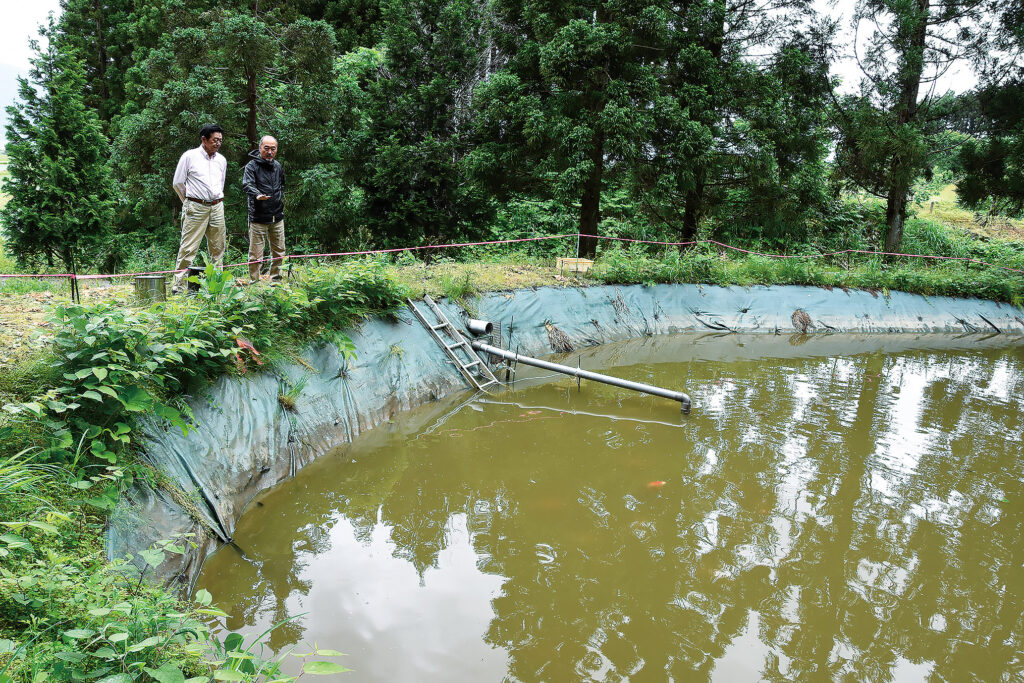

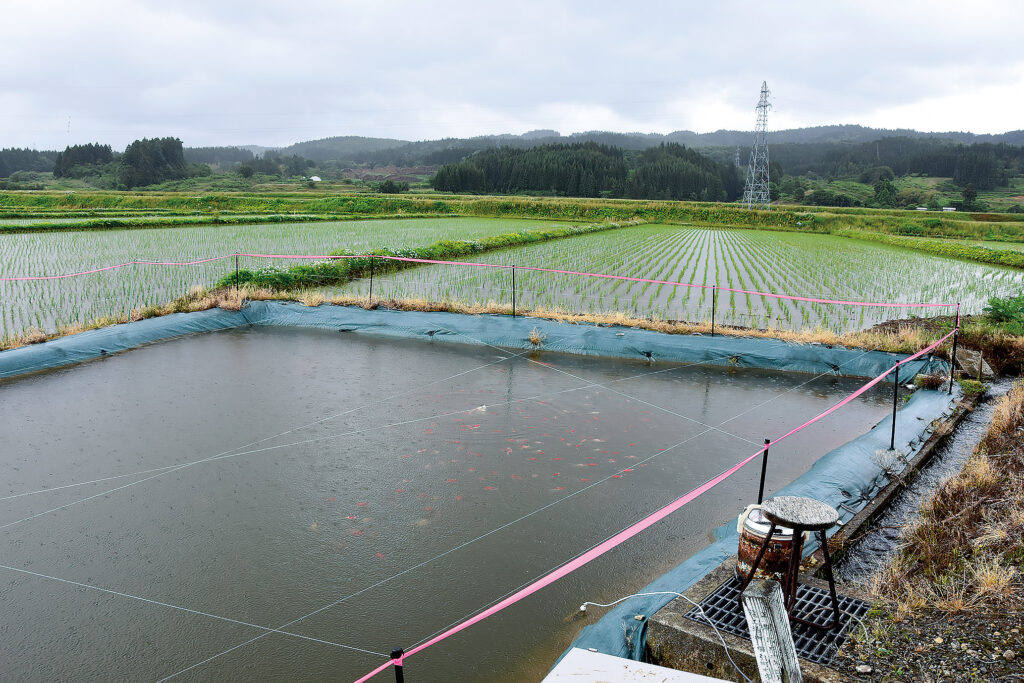
Additionally, the adjacent two-ton tank plays an important role. This is used to raise koi from tosai, with around 20 overwintering using a 1-kilowatt heater. The container, originally used as a septic tank, has sufficient strength for its current purpose. Despite the small water volume, Koichi prioritises filtration for heating and feeding, equipping the setup with a Wakishimizu and a biological filtration chamber. In spring, the tosai, which have grown to about 30 cm, are released into a roughly 300-ton mud pond constructed in a hilly area about 700 meters from house.
“After seeing other people’s mud ponds, I wanted one for myself,” Koichi said.
Part of the rice field in front of the house has been converted into a koi breeding pond, where a few promising two-year-old koi have been released to grow until they can be moved to the main pond.
“I’d like to raise the tosai I’ve selected frome the mud ponds and bring them home… I’d like to see them reach around 70 cm. I don’t have any 70 or 80 cm koi yet,” Koichi said.

L-Class Showa Sanshoku Champion

L-Class Kujaku Champion

L-Class Taisho Sanshoku Champion

M-Class Sakura Prize
Gradually Understanding More About Koi.
New Ideas from the Experience of Keeping koi.
Each pond has its purpose, with the ultimate goal being placing high-quality koi in the main pond. Since Koichi first started keeping Nishikigoi, his enjoyment has expanded beyond imagination. “Seeing Kiichi’s pond and others, I wanted to try something similar,” Koichi said. His skills have greatly improved, and he no longer experiences frequent disease outbreaks.
“Even so,” he said, “if I neglect tasks like cleaning the filtration tank, the pond’s condition deteriorates, so maintaining the equipment is crucial.” Reflecting on the past, he chuckled, “Back then, I knew nothing, to the point where I thought as long as there was water, the koi would survive.” “These days, I’ve become more attuned to the movements and lustre of the koi, so when they seem unwell, I consult with Kiichi or the local Yamazen Koi Farm for advice. I rely on Yamazen for various things, such as purchasing new koi and pond maintenance.”
Koichi has also participated in Koi Shows recently. He achieved top rankings at the Dewasyounai Koi Show, a gathering of enthusiasts from the Tsuruoka and Sakata areas. In the future, he is interested in advancing to a higher stage, such as the Tohoku District Koi Show.
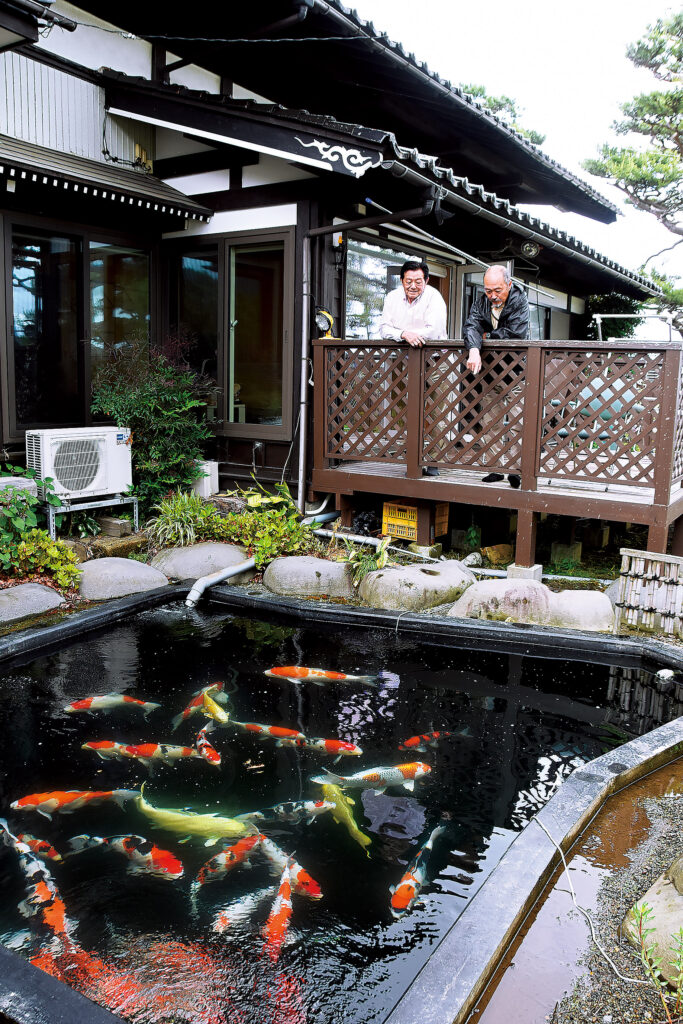
“I’d like to showcase the koi I’ve raised. I feel like I’m gradually understanding more about koi…When I see koi that have won a champion title in Tohoku Koi Show, They look really impressive, and it’s both a visual treat and a learning experience,” Koichi said.
Koichi’s Nishikigoi journey began with the casual notion that ’a garden pond without koi is incomplete.
“I never imagined I’d become so engrossed in this. It’s all thanks to encounters with various people like Kiichi and Yamazen. I didn’t even know the names of koi before, but now I can chat about them with my fellow koi enthusiasts. I got some help from friends in ikeage, and afterwards, we had a party at home while watching the koi,” he said.
With a wide circle of friends, there is hope that his extensive social network could contribute to establishing Nishikigoi within the local community.
“When it gets warmer, I’ll bring the tanks from the warehouse out to the open, and children on their way to school will be delighted to see them. Also, the older people around here, used to keep koi themselves, mostly black ones. So, if we organise tours to visit koi shops in the city or even to see Kiichi’s pond, people will be interested in koi.” Koichi spoke enthusiastically.
“Since I started keeping koi, I’ve initiated a project to release salmon fry into the Akagawa River which flows through Tsuruoka City. This is the project’s third year, so I hope they’ll start returning soon. In Tsuruoka City, the area around Kushibiki-machi is renowned as a fruit haven, and I hope it can further establish itself with other specialities like salmon and its roe. It would be delightful if this connection to fish could also spark interest in koi and goldfish. I probably wouldn’t have thought about these things if I didn’t keep koi.”
In the Shonai region of the Yamagata Prefecture, known for its abundance of koi breeders and hobbyists, there is great hope for exciting new developments sparked by Nishikigoi.

